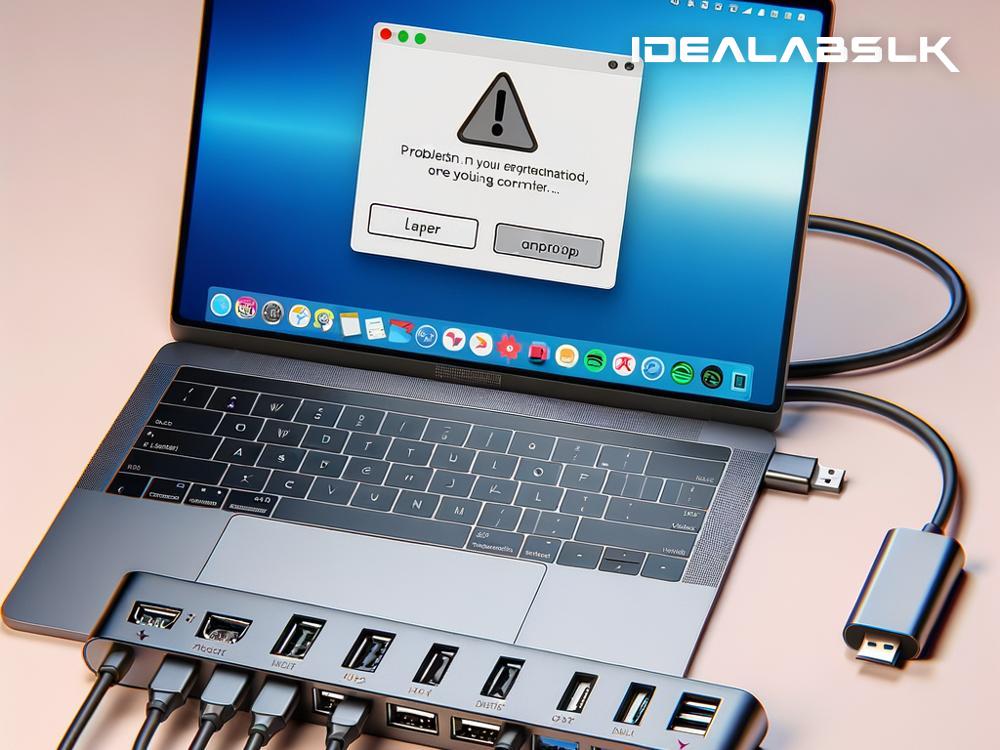How to Resolve 'Cannot Use USB-C Hub on Laptop'
In today's fast-paced world, where our laptops serve as our mobile offices, connectivity is key. A USB-C hub is a magical accessory that allows us to connect multiple devices, like keyboards, mice, external hard drives, and even monitors, through a single port on our laptop. But what do you do when your trusty hub suddenly refuses to cooperate? If you've ever faced the frustrating "Cannot Use USB-C Hub on Laptop" issue, you're not alone. But fear not! In this article, we'll walk through some simple steps to troubleshoot and resolve this problem, ensuring you're back up and running in no time.
Step 1: Check Your Connections
First things first, let's start with the basics. Ensure that the USB-C hub is properly connected to your laptop. Sounds simple, right? But it’s easy to overlook. Sometimes, the connection might not be secure, or there could be dust or debris in the port obstructing a good connection. Disconnect the hub, give both the port and the hub’s connector a quick visual inspection (blow gently to remove any dust), and then reconnect them. Ensure the connection is snug and secure.
Step 2: Try a Different Port
If your laptop has more than one USB-C port, try plugging the hub into a different one. This can help identify if the issue is with a specific port on your laptop. If the hub works in another port, then the problem likely lies with the original port, which may need professional attention.
Step 3: Reboot Your Laptop
Sometimes, the oldest trick in the book is all it takes. Turn your laptop off and then on again. This can resolve a surprising number of issues, as it clears the temporary memory and gives your system a fresh start, potentially recognizing the USB-C hub when it boots back up.
Step 4: Check for Updates
Keeping your laptop's software up to date is crucial for ensuring all your devices work smoothly. Check for any available system updates for your laptop's operating system. Also, see if there are any specific drivers needed for your USB-C hub to function correctly and ensure they are up to date. Manufacturers often provide updates on their websites that can improve compatibility and functionality.
Step 5: Try the Hub with Another Device
To determine if the problem lies with the hub or your laptop, try using the hub with another compatible device. If it works with another device, the issue might be with your laptop. However, if it doesn't work with any device, the hub itself could be faulty.
Step 6: Inspect for Physical Damage
Take a closer look at your USB-C hub and the cable. Check for any visible signs of wear and tear, such as frayed cables or damaged connectors. Physical damage can cause connectivity issues and might mean it’s time for a new hub.
Step 7: Power Supply Check
Some USB-C hubs require external power to function correctly, especially when connected to several devices simultaneously. Ensure that if your hub comes with a power adapter, it's connected and working as expected. Lack of sufficient power can prevent the hub and connected devices from functioning.
Step 8: Consult the Manual
When all else fails, referring to the user manual can offer insights. Manufacturers often include troubleshooting sections that may provide a solution specific to your hub model.
Step 9: Contact Support
If you've tried everything and still can't get your USB-C hub to work with your laptop, it might be time to reach out for professional help. Contact the customer support for your USB-C hub or laptop. They can offer guidance or inform you if your hub or laptop requires repairs.
Conclusion
A non-functional USB-C hub can hamper productivity and be a source of frustration. However, by following these straightforward troubleshooting steps, you can often resolve the issue quickly and easily. Remember, technology issues can often be fixed with a little patience and some basic troubleshooting. By keeping calm and methodically working through these steps, you'll likely find a solution and be back to your efficient, connected self in no time.

